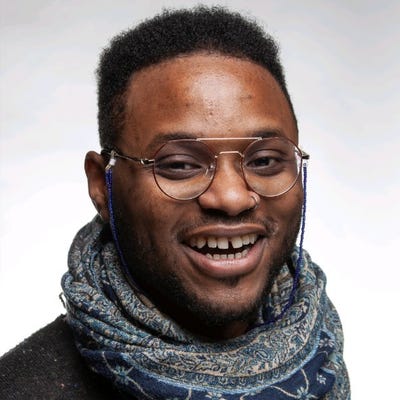Cisco on Generative AI: 'We Gotta Get This Right'Cisco on Generative AI: 'We Gotta Get This Right'
The Webex team has a lot to say us a lot about the future of generative AI in the collaboration space.

Jono Luk, vice president of product management for Cisco's Webex suite, says there's a "balance between efficiency and usability" when implementing artificial intelligence (AI) in an organization. AI already plays a significant role in Cisco's channel partner strategy, but there are big things in store for this trend at Cisco in 2024.
Luk recalls the day that ChatGPT 3 made its debut in 2022.
"[On] Nov. 30, 2022, many things shifted, including how AI 'felt.' It started speaking and giving answers, which is how people see generative AI."
In 2023, the world has begun growing more comfortable with generative AI, where it might fit in, and how it might enhance various workflows or procedures.
"In 2024, people will have figured AI out and will grow to expect generative AI in certain places," Luk said.
He said there is a growing trust for generative AI and the kinds of tasks it can pull off, telling Channel Futures that some people leverage the tool to handle tasks; then, they then go back to edit it. Stressing the gravity of keeping a human in the loop, Luk likewise noted that AI can do the heavy lifting in 70% of standard tasks, adding, "AI can't create facts yet, but we are getting there."
Vendors, Luk shared, have to show a willingness to evolve with customer and partner needs, among countless other insights.
Partners Will Play Key Role In Shaping the Future of CX
For knowledge workers and the customer experience, generative AI will become an integral part of how businesses drive the efficiency of their operations.

Cisco's Jono Luk
"If I can give Caroline the answer to her query faster, that's less time per inquiry. Or if I can automate that through a virtual agent, that can take a human out of the equation," Luk told Channel Futures. Such an application of generative AI might free agents to perform other, more pressing tasks. But that experience has to be seamless, Luk told us. The experience, he asserts, also has to feel human.
"We are still refining this process because every customer is different. Some still want to talk to an agent, while others want a quick, to-the-point answer," the Cisco executive shared.
Making sense of where generative AI belongs does not mean inserting it into every inch of an offering.
Luk said there needs to be more clever implementations of generative AI. He further noted that channel partners stand to play a pivotal role in ensuring AI is done responsibly. Here, Luk said, is where partners come into the equation by swaying those on the fence about generative AI.
"For a long time, folks in the health care industry were hesitant to adopt new technologies, having a 'watch then adopt' mentality. But some tools, we've seen, can be helpful to those in health care, like call summaries," Luk said.
Health care workers seem to have figured it out, Luk reasons, having realized they can become more efficient when they deploy generative AI. This brings us back to: Where should AI go? Partners have to try inserting AI into various business processes and learning from what did and did not work.
Partners have to help deliver whatever customers need and have to gauge a company's "tolerance to adopt AI," Luk said. He further maintains that partners must have the knowledge and tools to drive adoption, as everyone essentially knows they need AI, but not all understand what it can do and the value it might add to an organization.
As we unearth new ways that generative AI can lend a hand on the business front, Luk said that vendors share an equal responsibility to educate partners about their products so they can eventually share that information with future users. That plays directly into churn rates in the contact center environment, which Luk said are higher than usual.
Exploring the Art of the Possible
Partners can only do so much, meaning vendors share some of the responsibility in 2024, ensuring that channel partners know what the solutions they sell can do. According to Luk, vendors must stress their platform's capabilities, whatever they might be. And vendors have to be transparent in how they use data with partners and customers, with partners looking at "the art of the possible," as Luk put it."What can it do?" he asked. "Now it's meaningful to bring generative AI in as a tool to deliver specific outcomes, not just offering a buffet of AI," Luk said.
Partners should understand use cases, and if the problem is XYZ, they should have various meaningful applications for AI, Luke shared.
"We see upward of 30% of agents churning over, so agents have to have the proper tools to avoid this."
Peering at the Future of Collaboration
As the pandemic winds down, we're experiencing a return to the "new normal," as Luk put it. Some employers are requiring employees to return to the office a few times weekly. For partners, that means that 2024 could very well mean big business on the collaboration device front, along with software to outfit it. "No business will be 100% in person," Luk told Channel Futures.
With 98% of future meetings having at least one remote participant, according to Cisco data, the company also found that 85% of those spaces don't have proper collaboration tools. On the other end of this, the partners who will build, deploy and otherwise manage said systems stand to benefit from a potential boom in sales.
Futuristic applications such as augmented and virtual reality, and even holograms, could play a more central role in 2024, especially in more tactile areas of collaboration, like those in mechanical engineering where dialing in an expert to inspect and review a project happens often.
"These folks no longer have to fly, something we learned during the pandemic," the Cisco executive added.
With less time spent flying and more remote capabilities, post-pandemic collaboration is totally different than pre-pandemic collaboration. Not only are today's tools more sophisticated, but Luk says innovation will persist."We've even seen an uptick in businesses using holograms," Luk said.
Generative AI: 'We Have to Get This Right'
Channel partners looking to add AI to their stacks but who remain unsure where to start mustn't fear, according to Luk, as AI can add a ton of value to a business. With AI being such a powerful technology, the potential impacts are unlike anything we've seen before, at least during this second iteration of the industrial revolution. This is why, Luk said, "We have to get it right," noting there's too much at stake.
"In the past, the tech industry got many of these innovations wrong because we focused on efficiency. Back in the day, we focused on security over usability. We seem to have forgotten about the customer or end-user, which is where shadow IT came from," Luk said.
He believes developers must consider the customer and end user at every step and not merely focus on efficiency. It is the balance between experience and efficiency, he told us.
"And we must keep that in mind so we don't end up in a situation where AI runs amok," Luk warned.
Read more about:
AgentsAbout the Author
You May Also Like


